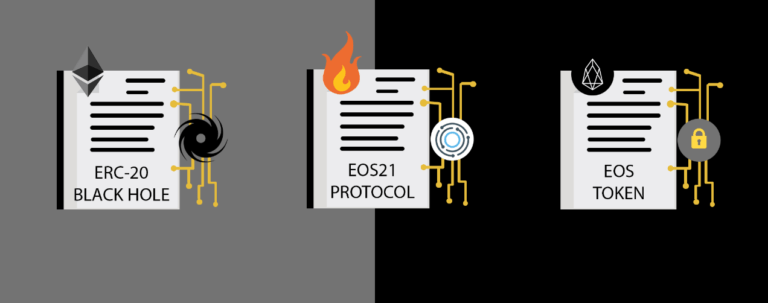shEOS, an all-female founded EOS block producer (BP) and technology company, has developed a method to instantly swap EOS and Ethereum ether tokens, in addition to other possible applications resulting from an ability to link the two chains.
EOS21, teleportation, black holes
The protocol is called EOS21, and it functions similarly to an Ethereum ERC20 airdrop token contract, in the sense that it will cause tokens to become non-fungible.
However, EOS21 brings more flexibility to this idea. The new protocol will allow any ERC20 contract – not just those with “built-in pause/expiry function” – to be read by the EOS blockchain. EOS21’s “Blackhole” function will absorb any ERC20 token to either make it non-fungible or burn it; and an oracle will observe and confirm that action to authorize the subsequent disbursement of EOS tokens. Altogether this functionality constitutes what the developers call “teleportation.”
New crosschain possibilities
The basic functioning code is already available on the project’s GitHub, but the developers foresee many potential expansions of the code in the future. Some of the more interesting possibilities include linking public addresses on the respective chains onto a single private key; using EOS functions to authentic Ethereum transactions and vice versa; and generally by reversing the teleport function – from EOS to Ethereum – to make a “2-way-peg [of tokens] locking the tokens inside of a contract on each chain.”
With this functionality laid in, a world of possibilities could be opened between the two chains, and the shEOS developers hope that distributed applications (dApps) could run on the chain that better suits each case, commenting “It’s widely known that each blockchain offers certain qualities that make it more appealing depending on the needs of the dApp developer.”
The shEOS company ranks 53rd on the listed of EOS BPs at press time, according to the BP ranking website eosnetworkmonitor. These producing nodes are elected in the EOS ecosystem by token holders.
As recently reported some have expressed concerns about the centralizing, or potentially corruptible nature of this voting system.








